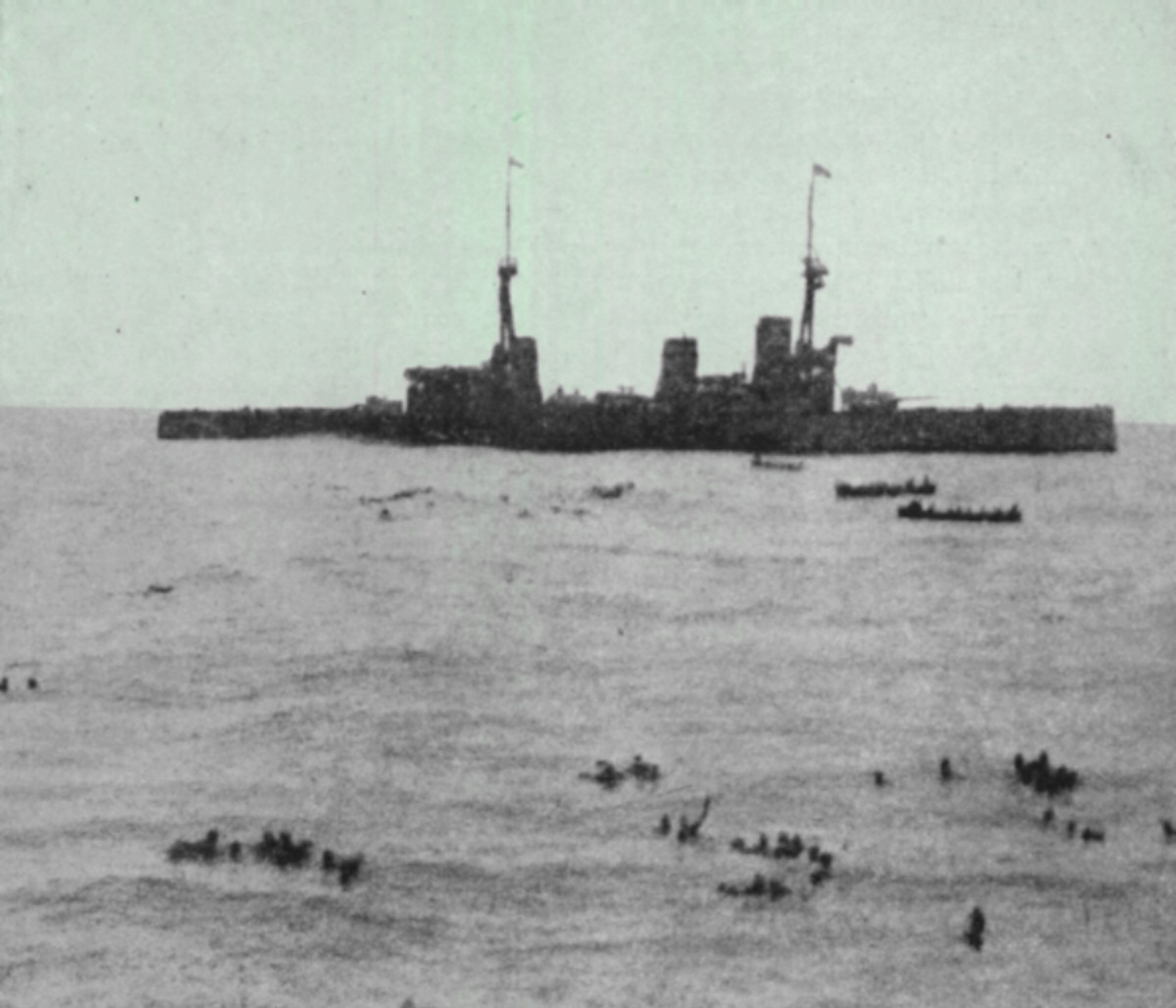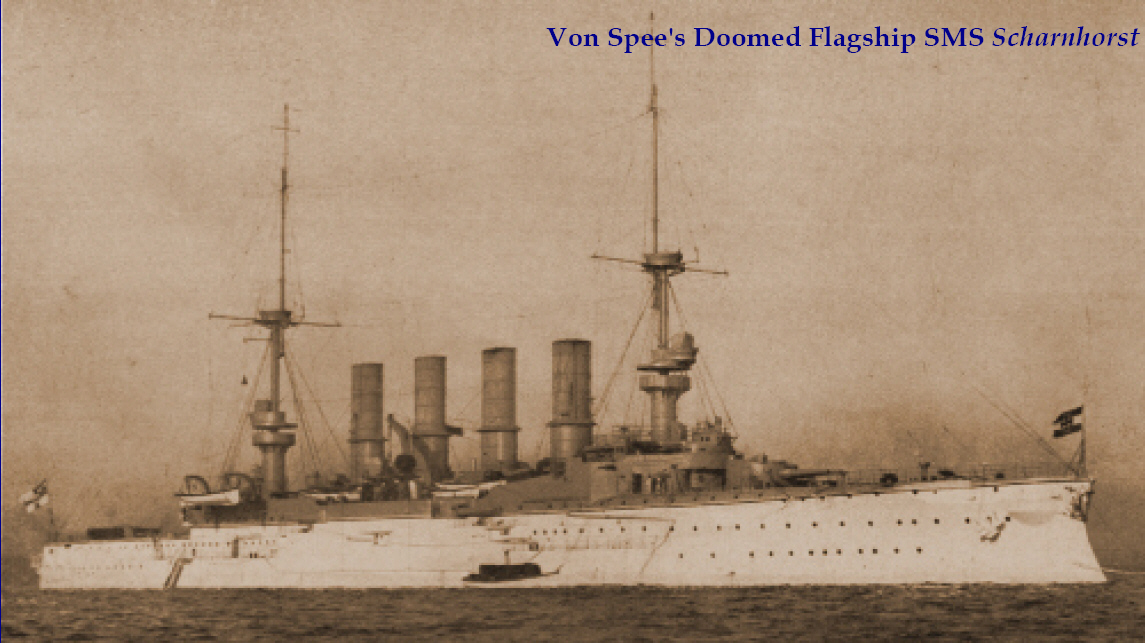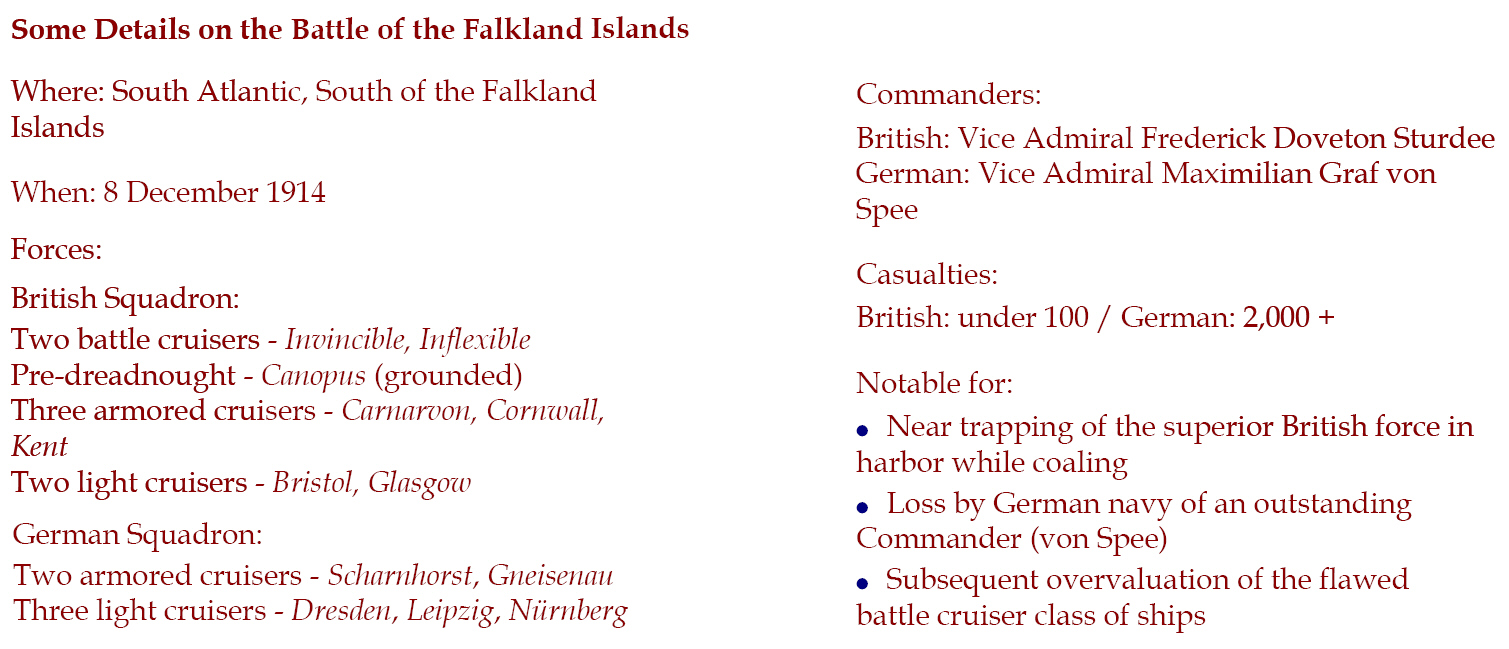A naval historian once said to me that as soon as the first battlecruiser, HMS Invincible, was launched it was destined to be put to purposes unsuitable to its design. Admiral Jackie Fisher's concept was for an improved form of the armored cruiser class, but even speedier and with larger guns, to perform missions like scouting, patrolling sea-lanes, and raiding. The trade-off that made this possible was sacrificing the amount of armor aboard. My friend pointed out that they were never intended to serve in the line of battle, or to take on a fully armored battleship as the Hood did with the Bismarck in the Second World War. He argued further that the battlecruiser disaster of the Royal Navy at Jutland showed that battlecruisers should never have taken on another battlecruiser — one lucky shot in, and you are sunk.
HMS Inflexible Picking Up German Survivors of the Battle
Today is the 99th anniversary of an action that helped admirals and naval planners get pointed in this wrong direction. At the 8 December 1914 Battle of the Falklands, two British battlecruisers, HMS Invincible (the first-ever battlecruiser) and HMS Inflexible devastated the squadron of German admiral Maximilian Graf von Spee, previously victorious against a less formidable Royal Navy flotilla at the Battle of Coronel.
Click on Image to Expand
Von Spee brought his ships across the Pacific and after his victory off the Chilean coast was preparing for his dash home to Germany across the Atlantic. However, he tarried excessively and the Royal Navy had sent the two battlecruisers to the South Pacific. Most unfortunately for von Spee, those ships were re-fueling at his next destination. The German ships almost trapped the British ships in harbor. But recognizing the danger, von Spee ordered his ships to run. Only one of his ships escaped that day, however. It was the British battlecruiser's finest hour, but it contributed to their over-valuation in fleet actions. Post-action reports emphasized how many hits the two battlecruisers had absorbed during the battle without any effect. But these were from the smaller guns of smaller ships.
Click on Image to Expand
Invincible was later blown in half and sunk immediately in the action at Jutland by fire from two German battlecruisers. Inflexible, was luckier; it was disabled by land fire and a mine at Gallipoli in 1915 but survived to fight at Jutland the next year, avoiding major damage. After surviving the war, it was sold for scrap – to a German firm.




Second paragraph should say 1914, not 1918. Otherwise, nice article.
ReplyDeleteThanks Jon, proofreading is the toughest thing about doing this blog. Correction made.
Delete